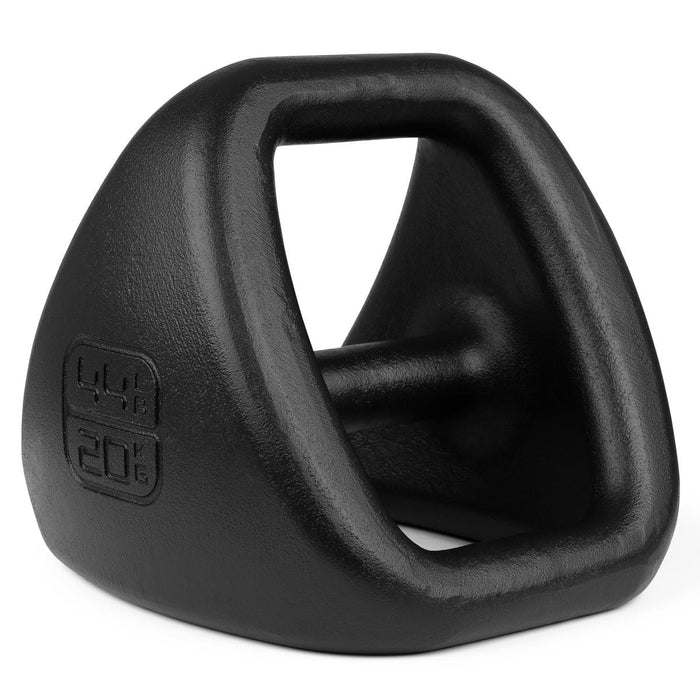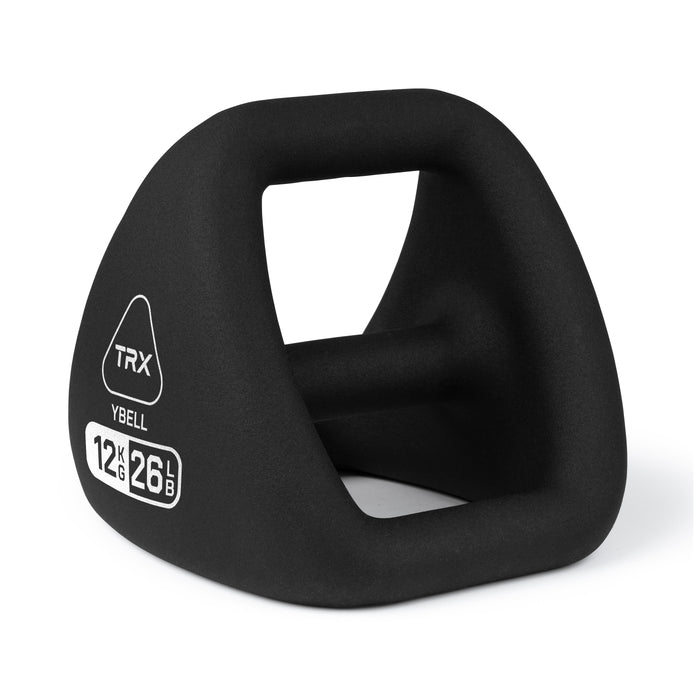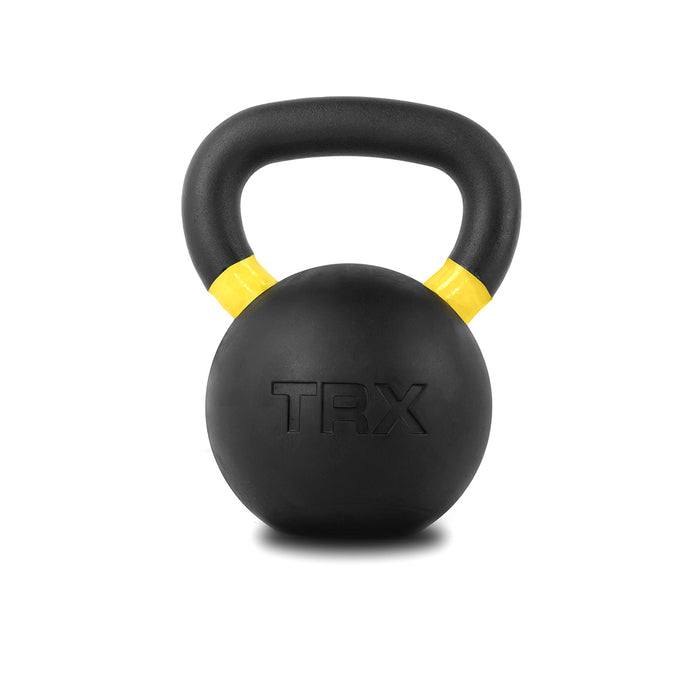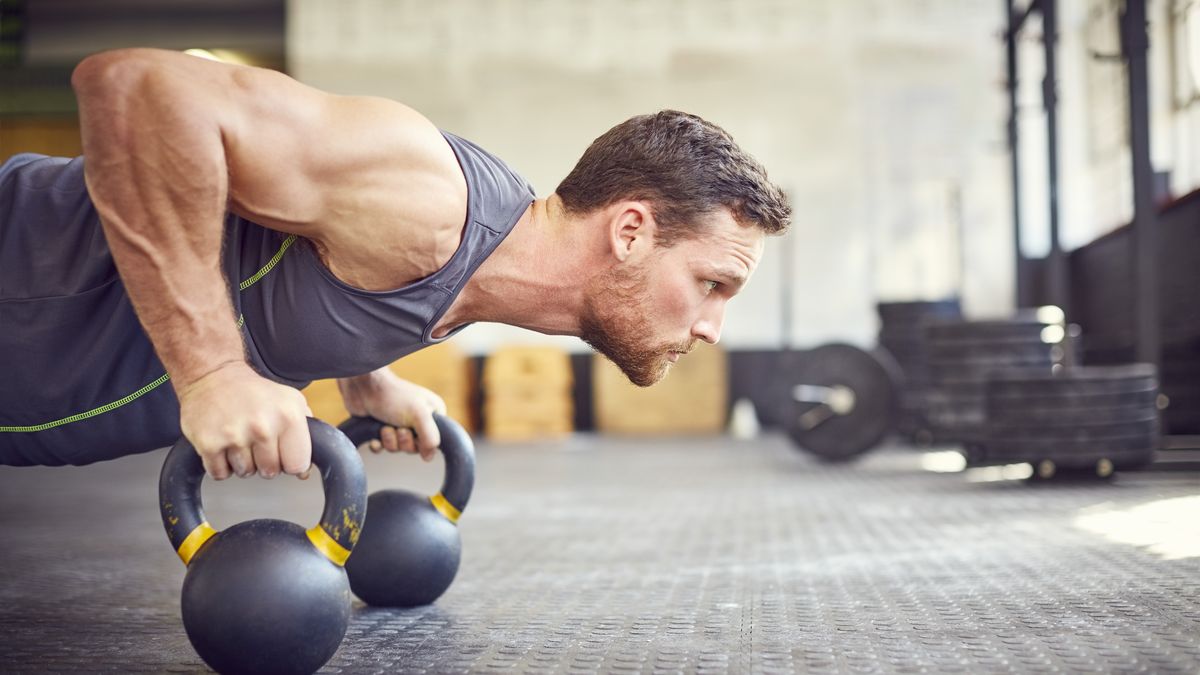When you think of lat exercises, you probably think about deadlifts, pushdowns, or lat pull-downs. But, did you know you can use dumbbells to effectively train this muscle area? Rows are a popular example, but there are plenty of dumbbell pull exercises you can try today.
In this article, we’ll take a look at why you should use dumbbells to exercise the lats, the movements themselves, and a sample workout you can practice next time you go to the gym. Let’s get started!

Benefits of Using Dumbbells to Train Lats
There are plenty of benefits that come with using dumbbells to train your lats. The main benefit is that it allows each arm and hand to function independently from each other through the entire range of motion.
This may also allow a greater level of muscle activation and contraction at the end of your range of motion. Each athlete has the ability to explore a “path” that allows full freedom in their muscles to adjust for orthopedic differences in structural makeup.
The Best Lat Dumbbell Exercises
Now that we've explored the benefits of dumbbell training for lats, let's dive into the most effective exercises to build impressive back development. (Want to find the perfect dumbbell lat exercises for your fitness level and goals? Our quick assessment quiz can create a personalized training plan just for you!) Whether you're working with basic dumbbells or premium hex dumbbells, these proven movements will help you build strength and muscle.
TAKE OUR TRAINING QUIZ
10. Bent-Over Dumbbell Row
The Dumbbell Bent-Over Row is a phenomenal exercise for the entire posterior chain (back side of the body). The standing position requires isometric contraction throughout the entire torso to maintain a neutral spine. It also requires control in the legs, more specifically the hamstrings and erector spinae (low back muscles).
Here's the gear you'll need:
How to Do a Bent-Over Dumbbell Row
- Hold an equal-weight dumbbell in each hand and come to a complete standing position
- With a slightly bent knee; hinge at the hips ensuring that your weight is balanced over your center of base. Weights hanging direction under your shoulders
- Initiate the movement by drawing your shoulder blades together pulling the weight towards your chest.
- Pause when you can not pull the weight any closer to your torso
- Slowly return the dumbbells to the starting position ensuring no shift in your body in space to avoid the use of momentum
Benefits of the Bent-over Dumbbell Row
- Great carryover to re-enforce a strong posture
- Can be done with minimum equipment and space
- Phenomenal core training
9. Single-Arm Dumbbell Row
The single-arm dumbbell row is similar to a dumbbell bent-over row, but this exercise demands far less on the body from a postural standpoint. The offset stance also creates a much greater surface of the base to allow an athlete to remain stable throughout.
How to Do a Single-Arm Dumbbell Row
- Select one dumbbell and stand completely upright
- Step forward into a split stance position with the leg opposite the dumbbell
- Place the non-working arm on the thigh for support and to aid in core contraction
- Allow your split stance to be wide enough that your trail leg and torso create a long straight line
- Initiate the movement by drawing your shoulder blade together pulling the weight towards your chest.
- Pause when you can not pull the weight any closer to your torso
- Slowly return the dumbbell to the starting position ensuring no shift in your body in space to avoid the use of momentum
Benefits of the Single-Arm Dumbbell Row
- Great exercise selection when only one dumbbell is available
- Allows for full-body training in space
- Stable position for standing back exercises
8. Dumbbell Seal Row
The dumbbell seal row is a very isolated and targeted exercise for the upper back. The muscles target the rhomboids, trapezius, lats, teres major, and parts of your rotator cuff. Laying flat on your chest gives these muscles an extra challenge because gravity adds extra resistance. Therefore, the isolation of these muscles is increased substantially.
How to Do a Dumbbell Seal Row
- Place a bench across a secure surface high enough that when you allow your arms to hang freely, the dumbbells are off the ground.
- Lay on the bench (preferably with your chin, chest, hips, and thighs remaining in contact with the bench) with one dumbbell in each hand.
- Initiate the movement by drawing your shoulder blade together pulling the weight towards your chest.
- Pause when you can not pull the weight any closer to your torso
- Slowly return the dumbbell to the starting position
Benefits of the Dumbbell Seal Row
- Considerable increase in intensity to the upper mid back and shoulders
- Added carryover to increase strength because of the absence of any and all momentum
7. Incline Dumbbell Row
The incline dumbbell row, or chest-supported row, is a great alternative to the seal row. This dumbbell pull exercise ensures that you are not utilizing momentum to initiate the contraction since your feet will be in contact with the ground. The contraction provides enough reactive force to help keep the core muscle of the torso engaged throughout.
How to Do Incline Dumbbell Row
- Set the incline bench to an angle roughly between 30-40 degrees
- While holding onto the dumbbell place your torso (chin, breast bone, and belly button) firmly against the padding
- Allow the dumbbells to hang straight down toward the ground by gravity
- Initiate the movement by drawing your shoulder blade together pulling the weight towards your chest.
- Pause when you can not pull the weight any closer to your torso
- Slowly return the dumbbell to the starting position
Benefits of the Incline Dumbbell Row
- Incline variation supplies a similar demand for the seal row. However, you also get core control
- Quick variation to set up in most gyms
- Great reciprocating exercises to pair with incline dumbbell presses
6. Cross-Bench Dumbbell Pullover
The cross-bench pullover is a great exercise to influence both the latissimus dorsi (lats) and pectoralis major. This exercise is excellent for influencing the lats at the end of your range of motion.
How to Do a Cross-Bench Dumbbell Pullover
- Place the shoulders perpendicular to a bench with the hips elevated to a tabletop position
- Hold one singular dumbbell (with both hands) directly over the chest
- With soft elbows & arms remaining entirely straight slowly lower the weight overhead until the wrists are in line with the horizontal plane of the shoulders
- Utilizing the muscles of the upper torso (chest and back) bring the dumbbell back to the original starting position above the chest
Benefits of the Cross-Bench Dumbbell Pullover
- This exercise is a great opportunity to challenge the upper back in the absence of the biceps
- Great body position to re-enforce core control and engagement while targeting the upper body
5. Kroc Row
The Kroc row is a great alternative to the “single-hand dumbbell row” and “three-point dumbbell row”. This variation has two distinct differences from the regular Kroc row. First, having the support of a stable surface (box, GHD, Squat rack, etc.) allows the non-rowing arm to create a tremendous amount of reflexive stability by pressing into the surface for engagement.
Secondly, the slightly more vertical upright torso may allow athletes with certain mobility restrictions to take advantage of the benefits of the single-hand dumbbell row.
How to Do a Kroc Row
- Select one dumbbell and stand completely upright
- Step forward into a split stance position with the leg opposite the dumbbell
- Place the non-working arm on a secure object that allows you to hinge into position while maintaining support
- Allow your split stance to be wide enough that your trail leg and torso create a long straight line
- Initiate the movement by drawing your shoulder blade together pulling the weight towards your chest.
- Pause when you can not pull the weight any closer to your torso
- Slowly return the dumbbell to the starting position ensuring no shift in your body in space to avoid the use of momentum
Benefits of the Kroc Row
- Great for providing stability to the torso/truck while overloading the working muscle groups
- Accessible for almost all athletes in training
- Extremely scalable variation of a single-hand dumbbell row
4. Renegade Row
The renegade row is an exercise that utilizes the “rowing motion” to limit rotation. The athlete will place two dumbbells on the ground with one hand on each of them. While maintaining a rigid plank, pushup position, they will pull one dumbbell towards their chest. The body is challenged by gravity and needs to resist rotating toward the moving dumbbell.
How to Do a Renegade Row
- Place two dumbbells on the ground. Placing one hand on each dumbbell get into a plank, pushup, position
- Initiate the movement by drawing your shoulder blade together pulling the weight towards your chest.
- Resist the desire to rotate the torso towards the moving dumbbell
- Pause when you can not pull the weight any closer to your torso
- Slowly return the dumbbell to the starting position
- Initiate the movement pattern on the opposite side or opposite dumbbell
P.S. use a TRX Suspension Trainer to try our custom TRX Row
Benefits of the Renegade Row
- Incredible contraction in all of the muscles of the torso
- Great reinforcement of core integration and carry over to activities of daily living
- A great exercise to challenge balance and coordination
3. Three-Point Dumbbell Row
The 3-point dumbbell row is very close to the “single-hand dumbbell row” in regard to its movement and effectiveness. Having the support of a bench or a racked barbell allows for a completely horizontal torso position and maximum reflexive stability from the non-rowing arm.
Because this body position supplies so much stability, you can use the three-point dumbbell row to practice progressive overload to build muscle.
How to Do a Three-Point Dumbbell Row
- Select one dumbbell and stand completely upright
- Place the non-working arm on a bench or box for support and stability
- Bend the knees slightly and move your feet into a position that facilitates and flat torso that is horizontal with the floor
- Initiate the movement by drawing your shoulder blade together pulling the weight towards your chest.
- Pause when you can not pull the weight any closer to your torso
- Slowly return the dumbbell to the starting position ensuring no shift in your body in space to avoid the use of momentum
Benefits of the Three-Point Dumbbell Row
- Very stable body position for an overload of the upper back musculature
- Both an extremely safe and stable variation of a single-arm dumbbell row
2. Dumbbell Pullup Drop Set Photos 21-25
The dumbbell pullup drop set is an incredible exercise for upper back development. The addition of the dumbbell to the working set adds an extra load to your body weight that will test your strength. Then, when you can’t do an additional rep, dropping the dumbbells will allow you to get in a few extra pullups.
How to Do a Dumbbell Pullup Drop Set
- Stand on an elevated surface to gain access to a pullup bar without jumping
- Place a single dumbbell behind the knee or between the feet
- Place hands in a comfortable pullup width and fully hang from the bar
- Draw the elbows down to your sides in an attempt to lift your chin over the bar
- Once another rep is no longer achievable release the Dumbbell from the feet or knee
- Continue performing pull-ups in a controlled manner until the desired result is met
Benefits of the Dumbbell Pullup Drop Set
- Exercises the lats and upper back while in article pulling motion
- Takes advantage of progressive overload during a traditional relative strength exercise
- Utilizes drop setting, an more advanced training technique
1. Dead-Stop Dumbbell Row
The dead-stop dumbbell row is an advanced variation of the 3-point dumbbell row. The body position is almost identical with a very distinct difference. The starting position of the dumbbell will always be on the ground. This causes you to always ensure that the starting sequence is repeated with each rep. Therefore, you must consciously be focused on the movement, allowing for better muscle control and activation.
How to Do a Dead-Stop Dumbbell Row
- Select one dumbbell and place it on the ground in front of the stable surface you’ll be executing the exercise in front of
- Place the non-working arm on that surface for support and stability
- Bend the knees slightly and move your feet into a position that facilitates and flat torso that is horizontal with the floor
- Engage the dumbbell with the working hand and Initiate the movement by drawing your shoulder blade together pulling the weight towards your chest.
- Pause when you can not pull the weight any closer to your torso
- Slowly return the dumbbell to the ground and allow it to rest for a moment
- Repeat the initial starting sequence with every rep
Benefits of the Dead-Stop Dumbbell Row
- Great integration into the central nervous system for conscious muscle control and activation
- Feed-forward muscle activation and bouncing or feedback to facilitate contractions
- Large carry-over to activities of daily living
Sample Dumbbell Lat Workout
Below is an example of a sample dumbbell lat workout for you to try at home or at the gym today. This combination of movement patterns combines elements of each of the best exercises we’ve covered above. You will see that many times we are using a compound set where you will perform two exercises back to back (pun intended). There should be minimal rest time between the compounding movements. The separation of time between the exercise blocks can be as long as 3-5 minutes.
How to Warm-Up Your Lats Before Exercising
Before getting into a full upper back workout, it’s imperative to warm up your muscles. Moving the arms and shoulders in all varied directions is preferred and recommended. Utilizing isometrics can go a long way here.
Before you start, place your hands against a door frame or squat rack at various heights to push or pull for 5 to 10 seconds. Do this as hard as possible so you can assist in blood flow, nervous system activation, and ‘loosening’ soft tissue.
Try performing the first set of your first two movements with about 30% of your intended workload and deliberately moving twice as slowly. This will allow the mind-body connection to build prior to the larger working sets.
Build Stronger Lats Today
Lats are one of the biggest muscle groups so naturally, working them out will help you look bigger overall. Incorporate some of these workouts into your pull day (or back day) and do each exercise progressively. In no time, you’ll begin to see the fruits of your labor.
P.S., we also recommend using dumbbells to train other muscle areas like quads, triceps, and chest. They’re great for building your overall physique.
Li, G., Shourijeh, M. S., Ao, D., Patten, C., & Fregly, B. J. (2021, January 7). How well do commonly used co-contraction indices approximate lower limb joint stiffness trends during gait for individuals post-stroke?. Frontiers in bioengineering and biotechnology. https://www.ncbi.nlm.nih.gov/pmc/articles/PMC7817819/






